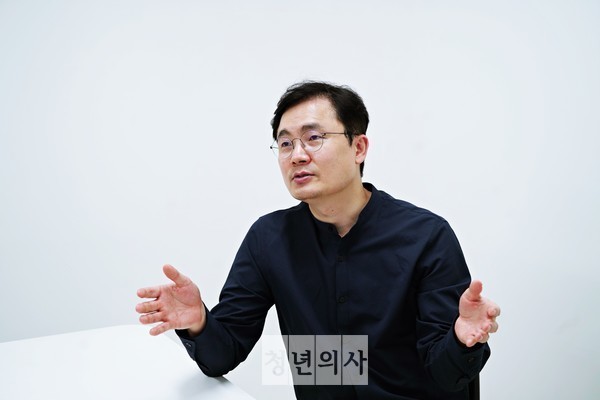Pulmonary arterial hypertension (PAH) is a rare disease, in which blood pressure in the pulmonary arteries that supply blood from the heart to the lungs increases. About 1,500 Koreans are undergoing treatment, and the number of potential patients is estimated to reach 6,000.
PAH's common symptoms include difficulty in breathing, shortness of breath, and swelling, which can also be experienced in daily life. So, it is difficult for most people to discover the disease. For these reasons, it takes one year and a half on average for patients to feel abnormal and get diagnosed with PAH. Early diagnosis and early treatment are quite difficult in PAH.
Patients with PAH have a low survival rate. In Korea, PAH patients’ three-year survival rate is 54.3 percent. Experts attribute the low survival rate to the difficulty of getting active treatment even after diagnosis.
Health insurance coverage is available only for those with serious PAH in Korea. It isn't easy to use a drug in the early stage, and there has not been a standard treatment guideline, either.

Recently, however, healthcare experts recognizing the problem have published the “Korean PAH Treatment Guideline,” to help patients receive aggressive treatment.
At a forum, “PAH in 2020 & Beyond: Sharing Experiences of Selexipag from the Real World Data,” on Aug. 22, experts proposed a new standard treatment guideline, taking into account the domestic PAH treatment environment and locally available drugs.
Professor Chang Hyuk-jae of the Cardiovascular Division at Severance Hospital, who led the establishment of the standard treatment guideline, appeared on YouTube to explain the treatment guideline's meaning.
“There are two implications. First, we have set up the criteria for objective risk assessment. Second, we wanted to reflect internationally recognized treatment methods in the local health insurance system,” Chang said.
The largest problem in local PAH treatment is that physicians do not perform a proper risk assessment.
According to Chang, doctors rarely treat a PAH patient for a year, and some are not aware of how to treat the patient.
“Depending on their subjective opinions, doctors could underestimate a risk. To solve this problem, we set the treatment guideline according to the international risk assessment criteria,” he said.
Another reason Korea needs a standard treatment guideline for PAH is that the disease has a better prognosis after early combination therapy. According to the real-world data released at the latest PAH forum, early diagnosis of PAH and the early use of different drugs in combination can extend the survival up to 7.6 years.
However, local PAH patients face limitations in combo therapy because of the limited national health insurance coverage. There are three authorized PAH drug classes in Korea -- endothelin receptor antagonists (ERA) such as bosentan, ambrisentan, and macitentan, PDE-5 inhibitors, well known as a treatment for erectile dysfunction, and non-prostanoid selective IP receptor agonist such as Selexipag.
Physicians have formed a consensus that an active combination of the three types of drugs could improve patient prognosis. However, a combo treatment is not easy in Korea.
“Study results show that people with almost no shortness of breath can be treated with active combination therapy to improve the disease's course. However, the Korean insurance system allows coverage only for those in ‘functional class 3’ who suffer a serious obstacle in daily life due to shortness of breath,” he explained.
PDE-5 inhibitors are reimbursable for people at functional class 2 or above. However, clinicians usually choose ERA class as the first-line treatment, and the ERA drugs receive insurance benefits from functional level 3.
Selexipag, which was most recently approved, can be used for a combo of two drugs, and it is the only drug allowed for insurance benefits in the combo of three drugs in Korea. However, patients still do not get sufficient access to combo treatments, Chang said.
“Outside of Korea, half of PAH patients get combo therapies, but less than 20 percent do so in Korea. This means that PAH patients have barrios to active treatment in Korea,” he said. “At least, we should recognize the internationally verified clinical results.”
Chang also submitted an opinion letter to the Health Insurance Review and Assessment Service (HIRA) to push for combo therapies for PAH patients.
The interview with Professor Chang is available on YouTube at https://youtu.be/1M_ecvVYCIo.
(Caption)
Professor Chang Hyuk-jae of the Cardiovascular Division at Severance Hospital explains on YouTube why experts set up the standard treatment guideline for pulmonary arterial hypertension (PAH).

